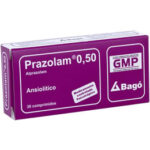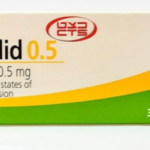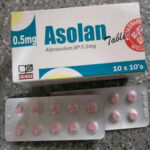Zanx: Meaning, Uses, Dosage, Side Effects, Addiction Warnings

What is Zanx?
Zanx is a misspelled or street name for Xanax, a powerful benzodiazepine that is used to treat anxiety and panic disorders by decreasing abnormal excitement in the brain. Zanx contains alprazolam and medication comes in the form of a tablet that quickly dissolves in the mouth, an extended-release tablet, or a concentrated oral solution. Generic Xanax comes in different shapes, colors, and sizes.
Benzodiazepines can have therapeutic anti-anxiety, anti-convulsant, muscle relaxing, and sedative effects. Xanax (Zanx), works by increasing the effects of a brain chemical called gamma-aminobutyric acid (GABA), which promotes calmness and produces a relaxed feeling. The drug decreases the level of excitement in the brain to treat anxiety and panic disorders.
Alprazolam is among the most prescribed benzodiazepine drugs in the U.S. and is among the benzodiazepines most often found in the illegal market, according to the Drug Enforcement Administration.
Xanax (Zanx), is often prescribed for mental health disorders related to anxiety. It can be used to treat general anxiety, panic disorder, social anxiety disorder, and phobias. It can also be used to treat seizures. For people who suffer from anxiety, it can create a sense of relief to focus on their lives without issues of anxiety or phobias plaguing them. When used as prescribed, it can calm people down and make them feel relaxed.
Xanax (Zanx), can also reduce physiological symptoms of anxiety and fear, such as a racing heart or hyperventilation. These drugs are so often prescribed because they work well on anxiety and they’re cheap.
However, many people use Xanax (Zanx), for nonmedical reasons, taking it in larger doses or more frequently than prescribed because it can create a euphoric feeling, especially at higher doses. Xanax tends to start acting quickly after a person takes it, and the euphoric effects of the drug will usually manifest themselves within about an hour after taking it.
A tendency has grown in some social circles to view Xanax (Zanx), as a type of “alcohol” in pill form. It’s become socially acceptable among these groups of friends to get together and share Xanax with one another. Of the 30.5 million people who used benzos in 2015, 17.1% misused them. Misusing Xanax (Zanx) or combining it with other substances like alcohol can amplify its effects, but the results can also be deadly.
Along with recreational use, many people rely on Xanax (Zanx), to deal with issues like situational anxiety without having to commit to therapy, which can be expensive and time-consuming. Xanax (Zanx), is popular in America, for example, because there is a tendency for people to love things that are looked at as a quick fix. Xanax (Zanx), isn’t a long-term medication, so some people “take it when they need it” for relief. The temporary relief they feel can help in a fast-paced world with constant exposure to negative world news, stressful jobs, and uncertainty.
How is Xanax (Zanx) taken?
The dose of this medicine will be different for different patients. Follow your doctor’s orders or the directions on the label. The following information includes only the average doses of this medicine. If your dose is different, do not change it unless your doctor tells you to do so.
The amount of medicine that you take depends on the strength of the medicine. Also, the number of doses you take each day, the time allowed between doses, and the length of time you take the medicine depend on the medical problem for which you are using the medicine.
- For anxiety:
- For oral dosage forms (solution, tablets, or orally disintegrating tablets):
- Adults—At first, 0.25 to 0.5 milligram (mg) 3 times a day. Your doctor may increase your dose as needed. However, the dose is usually not more than 4 mg per day.
- Older adults—At first, 0.25 mg 2 or 3 times a day. Your doctor may increase your dose as needed.
- Children—Use and dose must be determined by your doctor.
- For oral dosage forms (solution, tablets, or orally disintegrating tablets):
- For panic disorder:
- For oral dosage form (extended-release tablets):
- Adults—At first, 0.5 to 1 milligram (mg) taken in the morning once a day. Your doctor may increase your dose as needed. However, the dose is usually not more than 10 mg per day.
- Older adults—At first, 0.5 mg taken in the morning once a day. Your doctor may increase your dose as needed.
- Children—Use and dose must be determined by your doctor.
- For oral dosage forms (solution, tablets, or orally disintegrating tablets):
- Adults—At first, 0.5 milligram (mg) 3 times a day. Your doctor may increase your dose as needed. However, the dose is usually not more than 10 mg per day.
- Older adults—At first, 0.25 mg 2 or 3 times a day. Your doctor may increase your dose as needed.
- Children—Use and dose must be determined by your doctor.
- For oral dosage form (extended-release tablets):
In case of overdose, call the poison control helpline at 1-800-222-1222. Information is also available online at https://www.poisonhelp.org/help. If the victim has collapsed, had a seizure, has trouble breathing, or can’t be awakened, immediately call emergency services at 911.
Symptoms of overdose may include the following:
• drowsiness
• confusion
• problems with coordination
• loss of consciousness
If you miss a dose of this medicine, take it as soon as possible. However, if it is almost time for your next dose, skip the missed dose and go back to your regular dosing schedule. Do not take double doses.
Is Xanax (Zanx) safe during pregnancy?
No, taking Xanax (Zanx) during pregnancy may be harmful to your unborn baby. If you are hoping to become pregnant, it’s best to talk to your provider about alternative medications for your condition. Contact your provider immediately if you become pregnant since it’s important to discuss the risks and benefits of continuing on this medication. There is a North American Antiepileptic Drug (NAAED) Pregnancy Registry to monitor the safety of anti-seizure medications during pregnancy. Xanax (Zanx) isn’t typically used for seizures, but many other benzodiazepines are. If you are currently pregnant and taking Xanax (Zanx), it is encouraged that you enroll in the registry to help researchers learn about the risks.
What are the side effects of Xanax (Zanx)?
Xanax (Zanx) may cause side effects. Tell your doctor if any of these symptoms are severe or do not go away:
- drowsiness
- light-headedness
- headache
- tiredness
- dizziness
- irritability
- talkativeness
- difficulty concentrating
- dry mouth
- increased salivation
- changes in sex drive or ability
- nausea
- constipation
- changes in appetite
- weight changes
- difficulty urinating
- joint pain
Some side effects can be serious. If you experience any of the following symptoms, call your doctor immediately or get emergency medical treatment:
- shortness of breath
- seizures
- severe skin rash
- yellowing of the skin or eyes
- confusion
- problems with speech
- problems with coordination or balance
Xanax (Zanx) may cause other side effects. Call your doctor if you have any unusual problems while taking this medication.
If you experience a serious side effect, you or your doctor may send a report to the Food and Drug Administration’s (FDA) MedWatch Adverse Event Reporting program online (http://www.fda.gov/Safety/MedWatch) or by phone (1-800-332-1088).
Is Xanax (Zanx) a sleeping pill?
No, Xanax (Zanx) is approved by the FDA for anxiety and panic disorders, not insomnia. A common side effect is drowsiness, so a lot of people have taken Xanax (Zanx) to help them sleep. If you are interested in a medication to help you sleep, talk to your healthcare provider to discuss your options.
Is Xanax (Zanx) dangerous?
As with all benzodiazepines, Xanax (Zanx) has the potential to be dangerous, which is why it should only be taken as prescribed by a healthcare provider. It is not recommended for long-term use because of its side effects and its risk of being addictive. It can be habit-forming and cause unpleasant withdrawal symptoms, like high heart rate, insomnia, anxiety, seizures, sweating, and nervousness.
Can you drink alcohol while taking Xanax (Zanx)?
Drinking alcohol while taking Xanax (Zanx) can worsen the side effects and be very dangerous. It is not recommended you take this medication with alcohol because the combination can affect your breathing, slow your heart rate, cause dizziness, and can even lead to a loss of consciousness.





